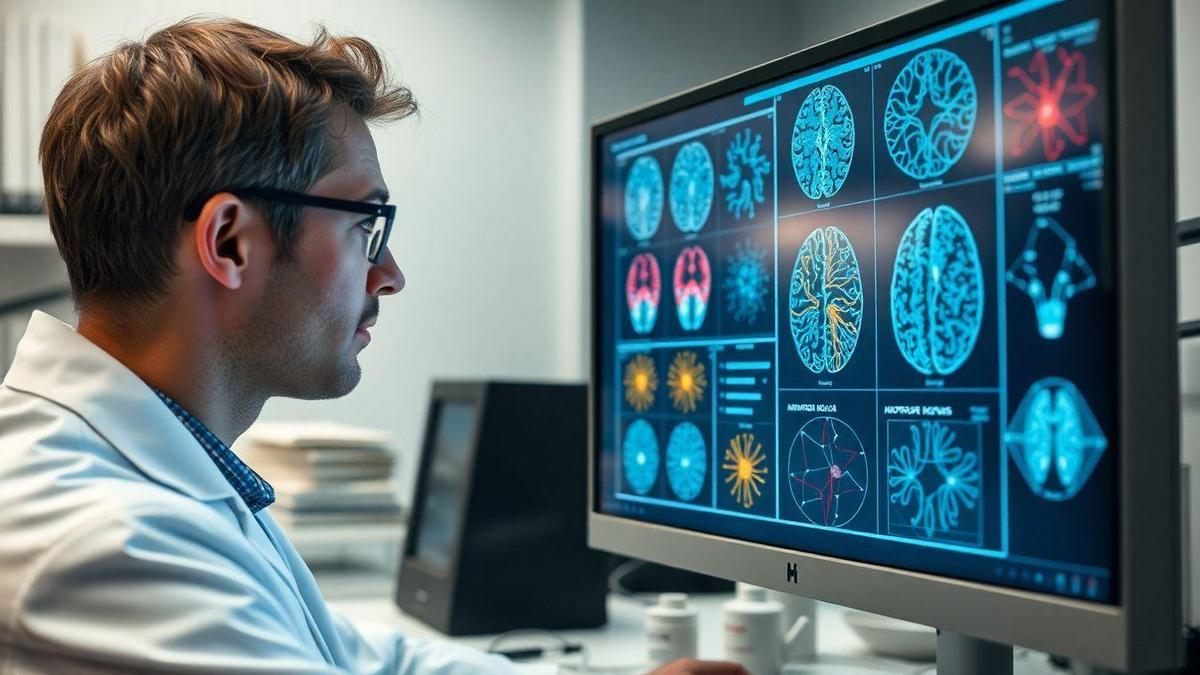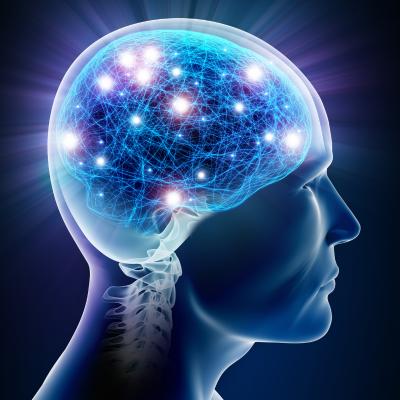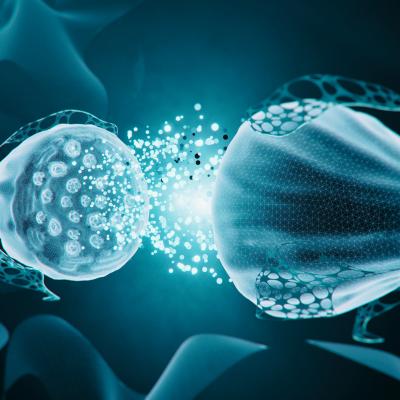Anúncios
Neurons in Human Empathy
Mirror neurons play a fundamental role in how we emotionally connect with others, being essential for human empathy. Discovered in the 1990s by Italian researchers, these neurons activate responses in the brain both when we perform an action and when we observe it in another person. This mechanism is vital for understanding the emotions and intentions of others, fostering greater social connection.
In addition to facilitating empathy, mirror neurons directly influence our learning and communication. By observing others’ expressions and reactions, we activate these neurons, internally simulating what is being experienced. This ability to mimic and understand others’ experiences strengthens our ability to form social bonds, laying the foundation for deeper and more meaningful human interactions.
Anúncios

How Mirror Neurons Work in Human Empathy
Mirror neurons are a type of brain cell that responds similarly when we perform an action and when we observe another person performing the same action. Discovered in the early 1990s by a group of Italian researchers led by Giacomo Rizzolatti, these neurons have been a focus in understanding the neural mechanisms underlying human empathy. They are believed to play a crucial role in our ability to empathize with others, allowing us to internally simulate their experiences. This mirroring process facilitates emotional understanding, enabling us to feel what others feel, which is essential for social interactions and bonding.
The functioning of mirror neurons is closely linked to the concept of social cognition. When we observe another person experiencing an emotion, our mirror neurons are activated, creating a neural representation of that experience in our own brain. This neural mirroring allows us to resonate with the observed emotion, fostering a deeper connection with others. For example, when we see someone smile, our mirror neurons activate, increasing the likelihood that we will smile back. This automatic response not only improves our social interactions but also contributes to our ability to understand and predict others’ emotions, a fundamental aspect of empathy.
Furthermore, mirror neurons are considered essential in the development of empathy from childhood. Studies have shown that babies exhibit empathetic behaviors, such as crying when they hear another baby cry, suggesting that the neural mechanisms for empathy are present early on. As children grow and their social environments become more complex, the role of mirror neurons in empathy becomes even more pronounced. They help individuals navigate social cues, understand intentions, and respond appropriately to others’ emotions, reinforcing the importance of empathy in human relationships.
In addition to their role in empathy, mirror neurons also contribute to the understanding of language and communication. The ability to mimic actions and emotions is essential for learning, and mirror neurons facilitate this process by allowing individuals to imitate others’ behaviors. This imitation not only aids in the acquisition of new skills but also strengthens social bonds, as shared experiences foster a sense of belonging and understanding. The interaction between mirror neurons, empathy, and social learning highlights the complexity of human interactions and the neurological basis of our ability to connect with one another.
What Are Mirror Neurons?
Mirror neurons are brain cells that react in a similar way both when we perform an action and when we observe another person performing that action. They allow the brain to “mirror” the action, creating an internal simulation. This mechanism facilitates understanding and interaction with others’ experiences, particularly in social situations.
The discovery of mirror neurons was a milestone in neuroscience, revealing a connection between our own actions and the ability to understand others’ behavior. These neurons are found in several areas of the brain, particularly in regions related to movement and social perception. They are automatically activated when we observe someone performing a task or expressing an emotion.
This automatic activation is crucial for empathy, as it allows individuals to “feel” others’ emotions without directly experiencing them. For example, when we see someone smiling, we activate our mirror neurons, which often leads us to smile as well. This response facilitates emotional connection between individuals.
In summary, mirror neurons are fundamental for the development of social and emotional skills. They not only allow us to understand others’ actions but also help us react empathetically and appropriately, which is essential for our daily interactions.
Advantages of Understanding the Identification of the Role of Mirror Neurons in Human Empathy

Understanding the role of mirror neurons in human empathy offers numerous advantages, especially in the fields of psychology, education, and interpersonal relationships. A significant benefit is the potential to enhance emotional intelligence. By recognizing how mirror neurons function, individuals can become more aware of their emotional responses and those of others. This increased awareness can lead to improved communication skills, as people learn to express their feelings more effectively and respond to others’ emotions with greater sensitivity.
Moreover, identifying the role of mirror neurons in empathy can inform therapeutic practices. Mental health professionals can leverage this knowledge to develop interventions aimed at improving empathy in individuals with social deficits, such as those on the autism spectrum. By focusing on activities that stimulate mirror neuron activity, therapists can help clients enhance their social skills and emotional understanding. This approach benefits not only individuals with specific challenges but also promotes a more empathetic society as a whole.
In the educational environment, understanding mirror neurons can enhance teaching methods and learning experiences. Educators can create environments that promote empathy by incorporating activities that encourage students to engage with each other’s emotions. For example, role-playing exercises or collaborative projects can activate mirror neurons, allowing students to develop a deeper understanding of their peers’ perspectives. This empathetic engagement can lead to a more inclusive and supportive classroom atmosphere, benefiting all students.
Additionally, recognizing the role of mirror neurons in empathy can strengthen interpersonal relationships. Individuals more attuned to others’ emotions can form deeper connections and navigate conflicts more effectively. By promoting empathy through the understanding of mirror neurons, people can enhance their social networks, resulting in stronger friendships and professional relationships. The ripple effect of this understanding can contribute to a more compassionate society, where individuals prioritize empathy and emotional connection in their interactions.
How to Explore the Identification of the Role of Mirror Neurons in Human Empathy
Exploring the identification of the role of mirror neurons in human empathy can be an enriching journey that combines scientific investigation with personal development. Engaging in neuroscience studies to learn about brain activity is a key step. By delving into research on mirror neurons, individuals can gain insights into how these neurons function and their implications for empathy. This knowledge can be applied not only in academic contexts but also in everyday interactions.
Observing social behaviors to see empathy in action is another effective way to explore this topic. By paying attention to how people respond to each other’s emotions, individuals can witness the real-time activation of mirror neurons. This practice of observation can enhance the understanding of social dynamics and the importance of empathy in fostering connections. It can also serve as a reminder of the shared human experience, reinforcing the idea that we are all interconnected through our emotions.
Participating in activities that promote emotional resonance can deepen the exploration of mirror neurons and empathy. Engaging in group discussions, workshops, or community service can provide opportunities to connect with others on an emotional level. These experiences can activate mirror neurons and enhance empathetic responses, allowing individuals to practice and develop their emotional intelligence in a supportive environment.
Analyzing case studies related to mirror neurons and empathy can provide valuable insights into the practical applications of this knowledge. By examining real-world examples, individuals can understand how mirror neurons influence behaviors and relationships. This analytical approach can also generate discussions about the ethical implications of empathy and the responsibility that comes with understanding others’ emotions.
Conducting experiments to understand imitation and its effects can further illuminate the role of mirror neurons in empathy. Simple experiments, such as mirroring a partner’s body language or emotions, can provide hands-on experiences of how these neurons operate. This practical approach can lead to greater self-awareness and a deeper appreciation for the power of empathy in human interactions.
Discussing findings with peers to enhance social cognition is a crucial step in exploring mirror neurons and empathy. Engaging in conversations about research, personal experiences, and observations can foster a collaborative learning environment. This exchange of ideas can lead to new insights and a more comprehensive understanding of how mirror neurons shape our empathetic responses.
In conclusion, exploring the identification of the role of mirror neurons in human empathy involves a multifaceted approach that combines scientific inquiry with personal development. By participating in various activities and discussions, individuals can deepen their understanding of empathy and its importance in human relationships.
Did You Enjoy Learning About the Identification of the Role of Mirror Neurons in Human Empathy?

Understanding the identification of the role of mirror neurons in human empathy is a fascinating journey that opens new avenues for personal and social growth. By exploring this topic, individuals can enhance their emotional intelligence and foster deeper connections with others. The insights gained from this exploration can lead to a more empathetic and compassionate society.
As you continue your journey of discovery, remember that empathy is a skill that can be cultivated and strengthened. The more we understand the mechanisms behind our emotional connections, the better prepared we are to navigate the complexities of human relationships. Take advantage of the opportunity to learn and grow in this essential aspect of our shared humanity.
Frequently Asked Questions
What are mirror neurons?
Mirror neurons are brain cells that help you understand others’ emotions. They “reflect” what you see and feel.
How are mirror neurons related to empathy?
You use mirror neurons to feel what someone else feels. They help create emotional connection.
What is the role of mirror neurons in identifying emotions?
Mirror neurons help you identify facial expressions and emotions. This makes it easier to understand how others feel.
Is research on the identification of the role of mirror neurons in empathy new?
Yes! This research is growing. Scientists are studying how these neurons function in human empathy.
How can I enhance my empathy based on research on mirror neurons?
